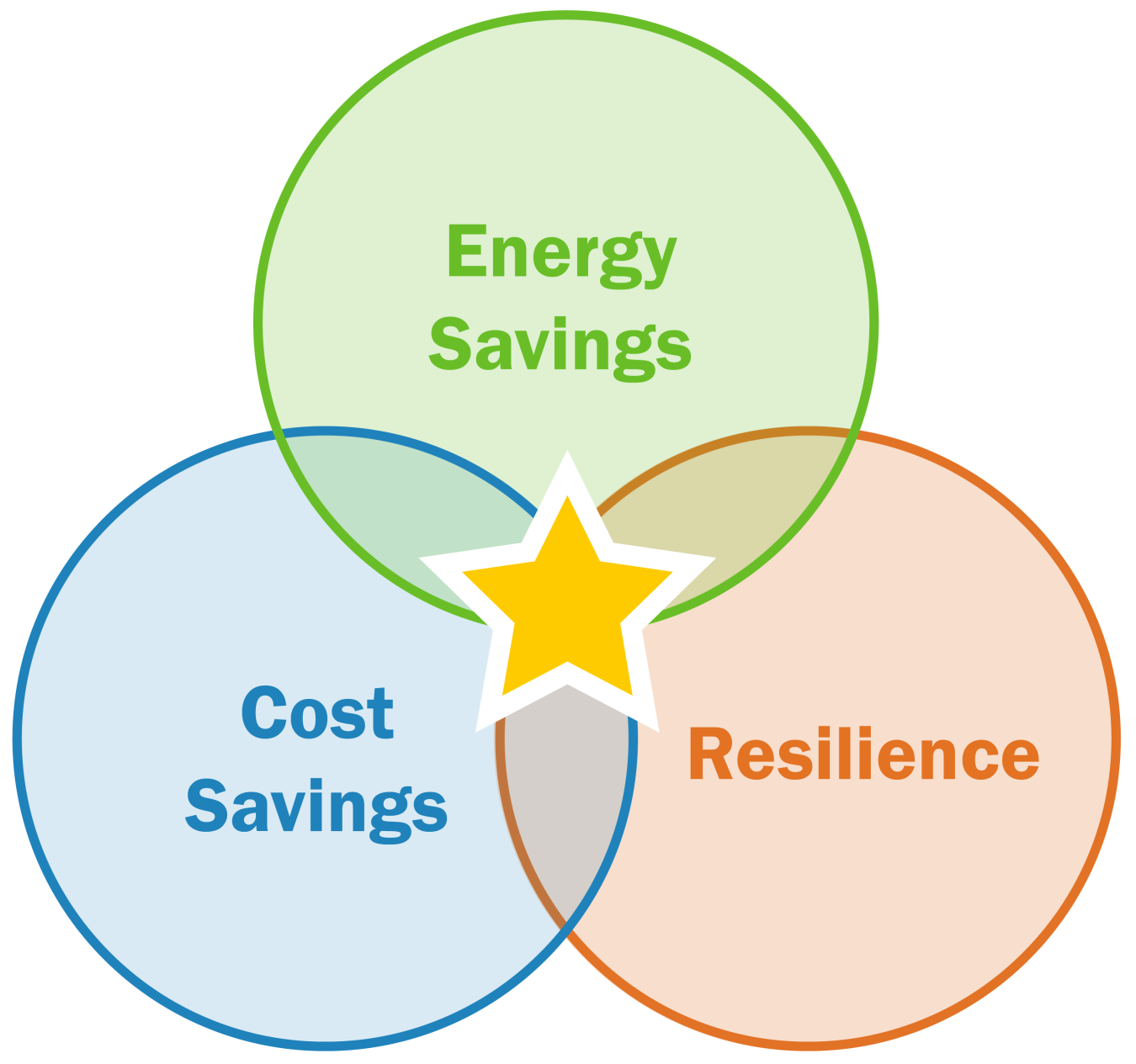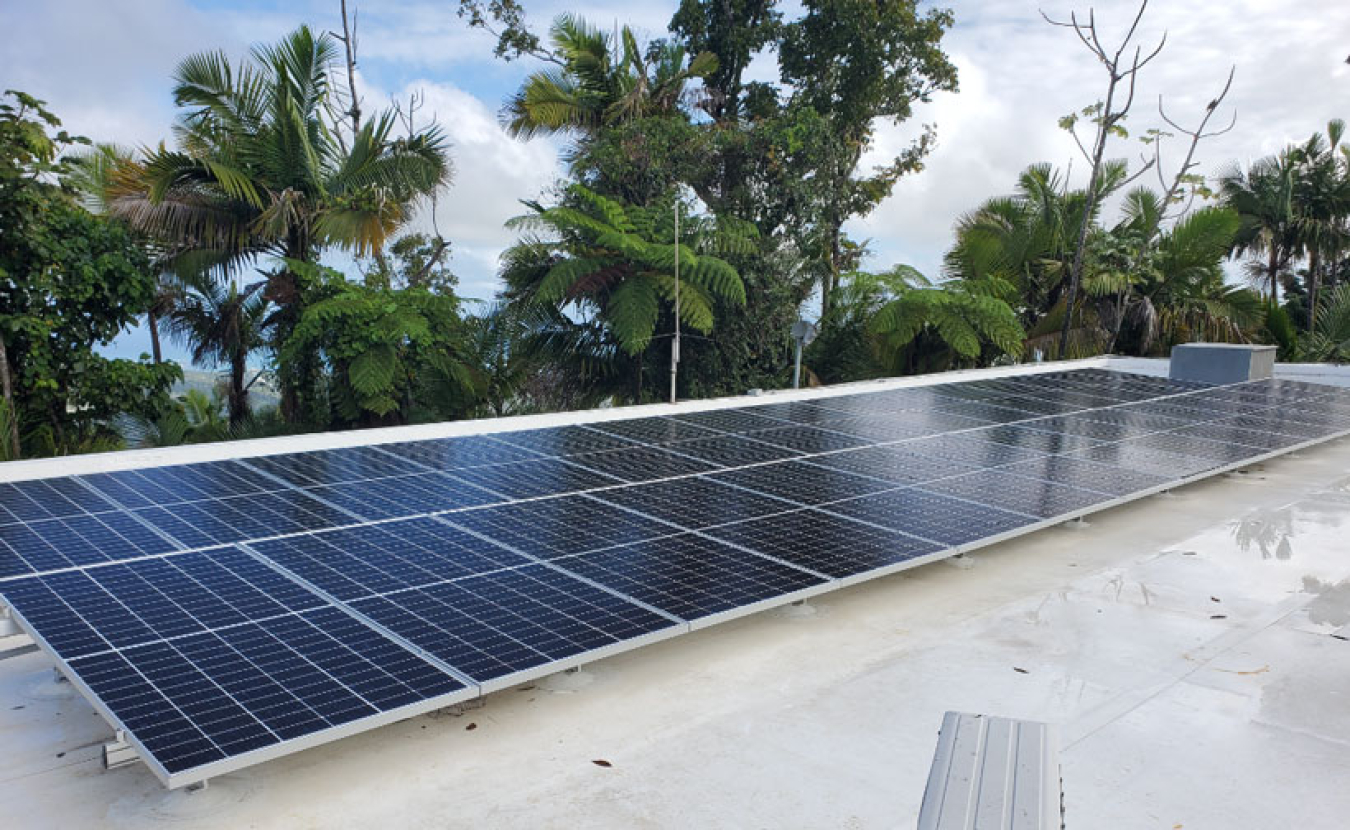
DERs can provide revenue streams while grid connected, helping to decrease overall microgrid costs and increase survival time during a grid outage.
Distributed energy resources (DERs)—including renewable energy technologies, storage (such as batteries), and combined heat and power (CHP)—can provide a variety of benefits for federal sites. DERs can help agencies meet goals and mandates, deliver cost and energy savings, and support resilience. When integrated into a microgrid, DERs can increase survival time during a grid outage when fuel supplies are limited.
Renewable energy, storage, and CHP can provide revenue streams while grid-connected, and these energy and cost savings may lower the overall cost of a microgrid and allow for the incorporation of additional microgrid components.
Distributed energy technologies can address specific resilience challenges but are only a part of the picture. The Federal Energy Management Program (FEMP) is developing a comprehensive framework for resilience planning and implementation that addresses the continuity of key operations. Learn more about Resilience Planning and Valuation.
Resilience Tools
FEMP's Technical Resilience Navigator (TRN) helps organizations manage the risk to critical missions from disruptions in energy and water services. The TRN provides a systematic approach to identifying energy and water resiliency gaps and developing and prioritizing solutions that reduce risk.
The REopt® web tool is designed to help users find the most cost-effective and resilient energy solution for a specific site. REopt evaluates the economic viability of distributed PV, wind, battery storage, CHP, and thermal energy storage at a site, identifies system sizes and battery dispatch strategies to minimize energy costs while grid connected and during an outage, and estimates how long a system can sustain a site’s critical load during a grid outage.
Video: This video provides an overview of REopt web tool capabilities and benefits. Video courtesy of the U.S. Department of Energy
FEMP's Customer Damage Function (CDF) Calculator helps federal facility managers understand the costs incurred at their site as a result of an electric grid outage. The CDF Calculator is the first step in determining the potential avoided costs associated with resilience investments. Once a baseline of outage costs is identified, an organization can look to the REopt web tool or the Technical Resilience Navigator to further understand the cost of inaction or to build out a given solution to a facility such as a microgrid.
Tech Specs and Checklists
Resilience Publications and Resources
FEMP's Kickstart Your Federal Microgrid Project: Financing Opportunities and Best Practices fact sheet provides an overview of its Financing Microgrids report and gives actionable next steps in the microgrid implementation process.
FEMP's Distributed Energy Technologies for Resilience and Cost Savings presentation, given during the 2019 Energy Exchange conference, provides an overview of solar photovoltaic (PV) and storage, CHP, and microgrids for cost savings and resilience.
FEMP's Financing Microgrids in the Federal Sector report explores procurement options and agreements that may be useful to federal agencies interested in implementing microgrids at their sites. Microgrid complexities, implementation considerations, and suggestions to get started are also discussed. This information will be most useful to agencies when they are exploring electric energy system resilience options or considering different procurement options to meet their needs.
Video: This animation simulates grid-connected and islanded energy flows among distributed energy resources at a military base—while connected to the grid, and while islanded during a grid disturbance. Video courtesy of the U.S. Department of Energy
FEMP's Process for Planning and Implementing Federal Distributed Energy Projects helps federal agencies streamline the implementation of DER projects for cost savings and resilience purposes. This process leverages federal best practices and lessons learned in order to help agencies execute DER projects that are technically sound and support agency needs and mission.
DOE's CHP Technical Assistance Partnerships (CHP TAPs) promote and assist in transforming the market for CHP, waste heat to power, and district energy technologies/concepts throughout the United States. CHP TAPs provide fact-based, non-biased engineering support to manufacturing, commercial, institutional, and federal facilities and campuses.

Solar + Storage = Energy Savings + Resilience
Success story highlights how a well-designed system saves energy, enhances resilience, and maintains critical operations in severe weather at Iguaca Aviary.

